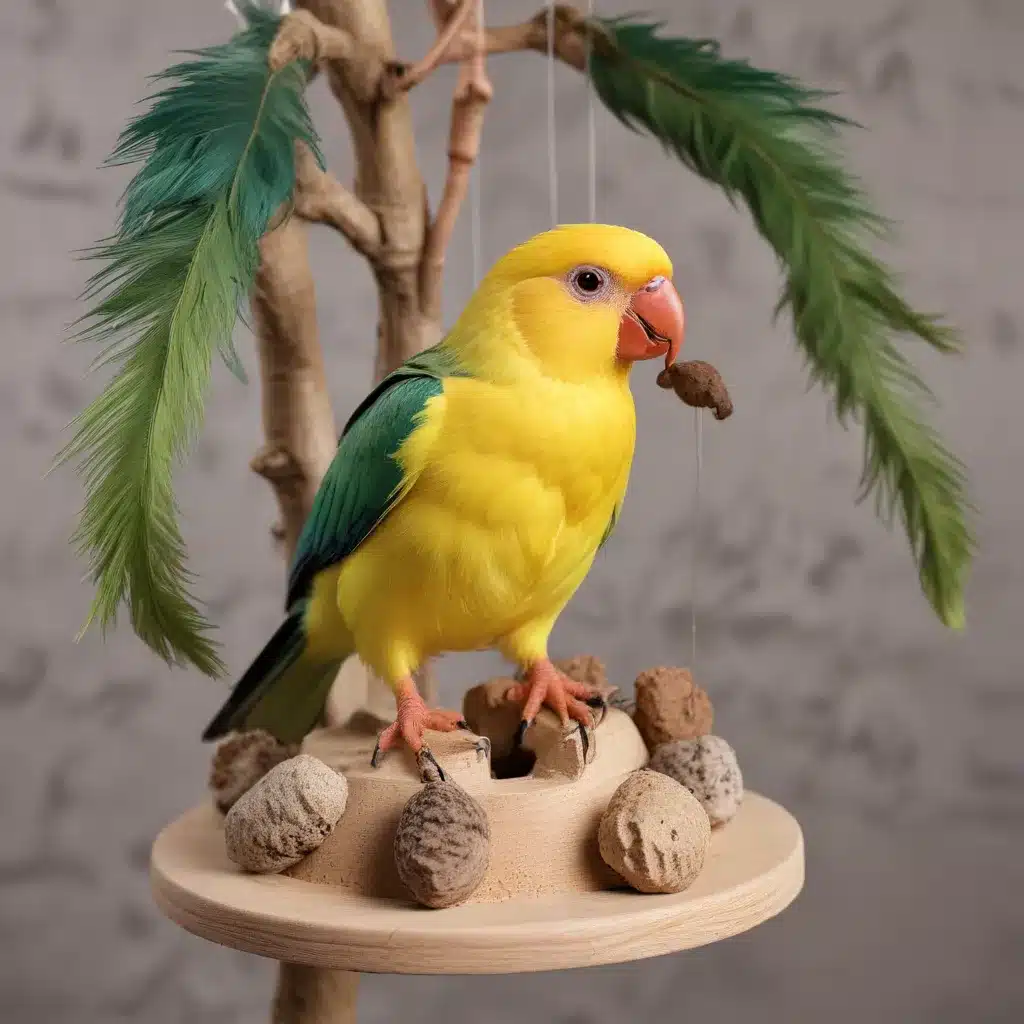
As an experienced avian caretaker, I’ve seen firsthand how the right toys and enrichment can transform the lives of our feathered companions. Birds are intelligent, curious creatures that thrive on mental stimulation and physical activity. By providing a dynamic, engaging environment, you can ensure your avian friend lives a vibrant, healthy, and thoroughly entertained life.
Avian Companions
Avian Species
From the diminutive parakeet to the majestic macaw, the avian world is filled with a dazzling array of species, each with their own unique needs and personalities. Whether you’re caring for a playful cockatiel or a regal Amazon parrot, understanding the natural behaviors and requirements of your feathered friend is the key to creating an enriching environment.
Avian Behavior
Birds are inherently social, inquisitive, and active creatures. In the wild, they engage in a variety of behaviors, from foraging and nesting to social interaction and play. As pets, they retain these innate drives, which must be properly channeled to prevent boredom, stress, and the development of unwanted behaviors.
Avian Care
Providing exceptional care for your avian companion goes beyond the basics of food, water, and shelter. A truly fulfilling life for your bird requires a thoughtfully designed environment that caters to their physical, mental, and social needs. This includes offering a diverse array of perches, toys, and enrichment activities to keep them engaged and thriving.
Interactive Toys
Types of Toys
The world of avian toys is vast and varied, with options ranging from simple, homemade creations to elaborate, store-bought designs. Some popular toy categories include:
- Foraging Toys: Encourage natural foraging behaviors by hiding treats in puzzle feeders or shredding materials.
- Chew Toys: Satisfy the instinct to chew by providing safe, durable materials like wood, leather, and rope.
- Climbing Toys: Promote physical activity and dexterity with ladders, swings, and perches of varying textures and diameters.
- Noise-Making Toys: Engage your bird’s senses with toys that rattle, jingle, or make other intriguing sounds.
- Destructible Toys: Allow your feathered friend to shred, tear, and explore toys made from cardboard, paper, and other biodegradable materials.
Toy Selection
When choosing toys for your bird, consider their individual preferences, size, and natural behaviors. Smaller birds may enjoy delicate, intricate toys, while larger species may thrive with sturdier, more robust playthings. Rotate toys regularly to prevent boredom and provide a constantly evolving environment.
Toy Safety
Ensuring the safety of your bird’s toys is of the utmost importance. Carefully inspect all items for any small, removable parts that could pose a choking hazard. Avoid materials that could splinter or be ingested, and always supervise your bird during playtime to prevent any accidents.
Avian Enrichment
Importance of Enrichment
Providing a stimulating, enriched environment is crucial for the overall well-being of your avian companion. Enrichment not only keeps your bird physically active but also satisfies their innate need for mental stimulation, reducing the risk of behavioral issues such as feather-plucking, aggression, and excessive vocalizations.
Environmental Enrichment
Beyond interactive toys, environmental enrichment can include a variety of elements, such as:
- Varied Perches: Offer a range of perch sizes, textures, and materials to promote healthy foot and leg development.
- Hiding Spots: Create cozy nooks and hideaways for your bird to retreat to when they need quiet time.
- Sensory Stimulation: Incorporate different colors, sounds, and scents to engage your bird’s senses.
- Social Interaction: Encourage positive interactions with you, other birds, or even reflective surfaces.
Behavioral Stimulation
In addition to physical enrichment, it’s crucial to provide your bird with opportunities for cognitive stimulation. This can include:
- Puzzle Feeders: Challenge your bird to solve puzzles or uncover hidden treats, engaging their problem-solving skills.
- Training Sessions: Teach your feathered friend simple tricks or commands, fostering a strong bond and mental engagement.
- Foraging Activities: Hide food items throughout the environment, encouraging your bird’s natural foraging instincts.
Avian Well-being
Physical Health
Maintaining your bird’s physical health is a top priority, and the right toys and enrichment can play a significant role. Proper foot care, for instance, is essential, and providing a variety of perch sizes and textures can help prevent issues like bumblefoot. Ensuring your bird gets adequate exercise and movement also contributes to their overall physical well-being.
Mental Stimulation
Just as important as physical health is the mental well-being of your avian companion. Boredom and lack of stimulation can lead to behavioral problems, so it’s crucial to keep your bird’s mind active and engaged. Rotating toys, introducing new activities, and providing opportunities for problem-solving and exploration are all key to maintaining their mental sharpness.
Owner Engagement
As an avian caretaker, you play a vital role in your bird’s happiness and fulfillment. Engaging in regular playtime, training sessions, and shared activities can strengthen the bond between you and your feathered friend, fostering a deeper understanding and a more enriching experience for both of you.
At Mika Birds Farm, we understand the importance of keeping your avian companion entertained, healthy, and thriving. By providing a diverse array of interactive toys and enriching activities, you can ensure your bird lives a vibrant, stimulating life, free from boredom and stress. Explore our wide selection of bird-safe toys, perches, and accessories to create the ultimate playground for your feathered friend.
Remember, every bird is unique, and what works for one may not work for another. Observe your avian companion’s individual preferences and adjust their environment accordingly. With a little creativity and dedication, you can unlock a world of joy and fulfillment for your beloved avian companion.


